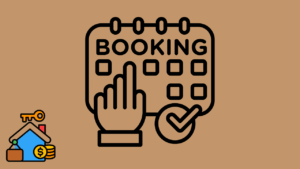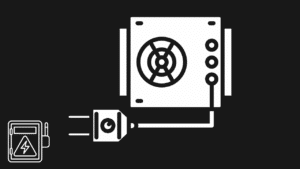A dog crate is an enclosed dog kennel that is used for the security and transportation of puppies and dogs. Dog crates are available in different sizes and materials like plastic dog crates which are used for airplane transport, and collapsible wire crates. They can serve as a den as well as a training tool. Cover the bottom with a thick piece of cloth, towel, or blanket to provide some warmth and comfort. In this article, we’ll explain why dog owners believe in dog crates.
Plastic crates are ideal for small breeds and can be for transportation with most models having a split into a top and bottom half. Collapsible metal wire crates are the best to use for large breeds and used for house training. Let’s take a look at why dog owners believe in dog crates.
What a crate is and what it is not
Think of a crate as a den that teaches good habits and offers a predictable spot to relax. It is not punishment, it is not a fix for every behavior issue, and it is not a place to keep a dog all day. You are building a positive association. The crate should mean snacks, naps, and quiet, not scolding or isolation.
Can be used for housetraining
A dog crate is a great tool for house training for any dog that hasn’t been house-training. Dogs and puppies love a clean space and don’t like a soiled space. As long as the crate is large enough for your puppy or pet and you treat them right. So, the crate can be for housetraining and at the same time serve as a bedroom and a bathroom. A crate that is of the right size is very useful in teaching your pet bladder control.
If it’s well maintaining, cleaned, and comfortable. It gives your dog the opportunity to practice peeing or pooping in the right place. It also gives a den-like bedroom feel which most dogs like. Find out more about some of the best and cozy crates available in the market today.
Comes in handy in different scenarios
When done correctly, crate training can help relieve your dog’s stress during emergencies. In cases where your dog is very ill or has undergone surgery, they can rest in the crate during the recovery period. Effective crate training gives your pet a familiar place to rest and helps them learn how to deal with their anxiety and distressed situations.
Crate options at a glance
Use this table to match crate style to your dog and your lifestyle.
| Crate type | Material | Best for | Pros | Watch outs | Typical size guidance |
|---|---|---|---|---|---|
| Wire folding crate | Steel wire with removable tray | Training at home, flexibility as your dog grows | Good airflow and visibility, divider panel for puppies, easy to clean, folds flat | Some dogs feel exposed, add a cover for privacy, remove collar when unattended | Dog should stand without crouching and turn easily, divider lets you adjust space |
| Plastic travel crate | Rigid plastic with metal door | Travel, storm sound dampening, vet visits | Cozier feel, good for nervous dogs, airline friendly models exist | Can run warm in hot climates, confirm ventilation | Measure nose to base of tail and add five to ten cm, height to tips of ears |
| Furniture style crate | Wood or composite that doubles as a table | Living rooms where space is visible | Blends with decor, keeps a permanent resting spot | Heavier, not for strong chewers, confirm interior size not just outside | Same interior rules as above, check doorway width for comfort |
| Soft sided crate | Fabric on a lightweight frame | Calm adult dogs, camping, hotels | Light and portable, quick set up | Not for chewers or escape artists, harder to sanitize | Choose a snug fit for sleeping, not for unsupervised long stays |
| Crash rated car crate | Reinforced metal or composite | Frequent car travel and safety minded owners | Strongest choice for vehicles, anchors to tie downs | Price and weight, measure the vehicle before purchase | Dog must sit, stand, and lie down comfortably with room for a pad |
Humane crate training: a step-by-step plan
Training is fast when the crate predicts good things. Move at your dog’s pace and keep the door open during the first sessions.
- Invite curiosity. Scatter a few treats just inside the door. Let your dog choose to step in and out. Name the space with a cheerful cue such as “bedroom”.
- Feed nearby. Place the bowl beside the crate for two meals. Move it just inside the doorway for the next two meals, then to the back for two more. Doors remain open.
- Add a short stay. While your dog enjoys a chew inside, close the door for ten to thirty seconds, then open and drop a treat in the crate. Repeat three times using believe dog crates.
- Grow duration. Build to two minutes, then five, then ten, always with a calm chew. Step in and out of the room for a few seconds to show that people leaving is normal.
- Practice calm exits. Open the door only when your dog sits or lies quietly. If they bounce up, close the door gently for a second, then open again when they settle. This teaches that patience opens doors.
- Add bedtime. Guide your dog to the crate with the cheerful cue, give the bedtime chew, lights dim, white noise if helpful. Set an alarm for overnight potty breaks for young puppies.
Keep sessions short. End while your dog still wants more. If you see pawing at the door or high pitch whining, you moved too fast. Step back to an easier level for a day or two.
Believe in dog crates: Can be good for dogs of all ages
Crate training can be on a puppy and help prevent bad behaviors when your dog reaches an adult stage. Crates can also be for curious puppies to keep them safely secluded when you aren’t around to supervise them. This allows your puppies to get to their space making house training even better and easier. They also help puppies in potty training.
For older dogs with health complications, pet crates provide a safe haven and a restful place. They can comfortably stay in the crate and take naps. You can also carry your puppy in the crate when visiting the vet.
Dog crates are beneficial to all types of pets as long as you use them the right way and allow your pets to get uses to his crate. A crate provides a safe space for rescue pets and allows them to adjust to their new surroundings. Moreover, have their own space. Whichever way you’d like to use the crate just ensures that you don’t force your dog to prevent them from hating it.








